Permite research
Permite – a 56% silver non gamma 2 admix alloy
Performance
- Permite – A Classic, The Dental Advisor, Volume 15, 1998.
- Mahler D B, Bryant R W. Microleakage of Amalgam Alloys: An Update. JADA, Vol. 127 September 1996;1351-1356.
- Permite, The Dental Advisor, Vol. 5, No. 2, March/April 1995.
- de Vries J., de Wet F. A., Hardwick F. K., Clinical Evaluation of a new low Gamma-2 amalgam. Journal of the D.A.S.A. August 1984.
- Roberts H. W. Lt Col, Coover M. Lt Co., Meyer R., Mitchell W., Beasley B., Berridge J., Evaluation of Permite Amalgam, USAF Dental Investigation Service, 18 November 1998.
- Smales R. J., Rupinskas L., Clinical Behavior of Three Extended Carving Time Amalgams Over 3 Years, Department of Dentistry, University of Adelaide, South Australia.
- Nelson L. W., Mahler D. B., Factors influencing the sealing behavior of retrograde amalgam fillings, Oral Surgery Oral Medicine Oral Pathology March 1990;69:356-360.
- Ben-Amar A., Liberman R., Bar D., Gordon M., Judes H., Marginal microleakage: the effect of the number of cavity-varnish layers and the type of amalgam used. Dental Materials 1986;2:45-47.
- Hewitt D. G., Mercury Emission from Dental Capsule Systems, Monash University, Department of Chemistry Unpublished work September 1990.
- Mahler D. B., Unpublished report on Permite and an experimental alloy, University of Oregon Health Sciences Center November 1983.
Biocompatible
- Leuschner F., Mutagenicity Study of an Eluate from Permite Powder in the Ames Salmonella/Microsome Plate Test (in vitro). Laboratory of Pharmacology and Toxicology, Hamburg LPT Report No. 7483/92 September 1992.
- Leuschner F., Implantation Test of Amalgam Permite in Rabbits, Laboratory of Pharmacology and Toxicology, Hamburg LPT Report No. 7482/92 September 1992.
- Leuschner F., Acute Tolerance Study of Permite Powder by Oral Administration to Sprague-Dawley Rats. Laboratory of Pharmacology and Toxicology, Hamburg LPT Report No. 7481/92 September 1992.
- Ellender G, Feik S, Gaviria C., The biocompatability testing of some dental amalgams in vivo, Australian Dental Journal 1990;35(6):497-504.
Clinical performance
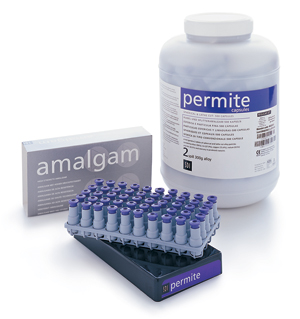
Performance
Permite – A Classic, The Dental Advisor, Volume 15, 1998.
Permite was first released in 1976 in Australia as Permite. In 1979, it was released in a pre-encapsulated form in the USA and was provided in 3 sizes and 3 alloy/mercury ratios: minimum, normal and extra. It was also made available as powder and tablets in fast and regular set. Feedback from dentists in the USA and Australia resulted in reformulation in the early 1980’s. Concurrent with these changes, the terms minimal, normal and extra ratios were changed to fast, regular and slow set. Additional input from dentists resulted in the release of Permite ECT (extended carving time) in 1985.
Requests for a larger amalgam mass for large restorations led to the 1993 introduction of Permite in 5 spill capsules containing 2.3g of amalgam. This large capsule has been well received. At the request of a dental school in the USA, Permite SC (slow carving) was developed for use in training dental schools. Having withstood the test of time and become popular with many dentists, Permite is now available in 1-, 2-, 3- and 5-spill sizes in fast, regular, slow, ECT and SC setting times. Bulk powder and tablets are also still available in fast and regular set. Permite has only recently become available in the Direct Placement (DP) amalgam capsules, in which the amalgam is triturated and then dispensed directly into the cavity.
The ease of use, excellent properties, and convenient packaging, combined with a long track record of clinical success, resulted in Permite receiving one of the highest clinical ratings ever given to a dental amalgam by our consultants – a 98% rating.
Performance
Mahler D B, Bryant R W. Microleakage of Amalgam Alloys: An Update. JADA, Vol. 127 September 1996;1351-1356.
Using an in vitro air pressure test, the authors found a wide variation in the microleakage characteristics of amalgam restorations made from 33 recently manufactured precapsulated alloys. Spherical particle alloys as a group exhibited the highest microleakage values. When the authors changed the mercury / alloy ratios to produce 1 percent more mercury in the capsules by weight, microleakage decreased significantly. Because extensive microleakage of amalgam restorations has been related to increased post-operative sensitivity, the authors suggest that practitioners should be alert to this potential problem.
In this study to provide updated information to manufacturers and practitioners, Permite demonstrated the lowest value of microleakage of all the 33 alloys tested. This result is consistent with other results documented.
Performance
Permite, The Dental Advisor, Vol. 5, No. 2, March/April 1995.
Permite is an excellent dispersed phase type amalgam that can be used for a full range of restorative procedures. It received a 98% approval rating.
Permite is a dispersed phase type amalgam available in 1-, 2-, 3- and 5-spill capsules. Permite has a slight expansion at 24 hours after placement. Its compressive and tensile strengths and creep compare favorably to premium alloys. Twenty-five consultants in the United States and Brazil used Permite in over 1000 cases.
Permite received a 98% approval rating for consistency of mix, ease of loading, placement in preparations, condensability, burnishability, quality of interproximal contact, carvability, and setting characteristics. High-, medium- and low-energy amalgamators provided good mixes. The working and setting times allowed large restorations to be condensed and carved without difficulty. The resulting restorations were smooth and had excellent margin adaptation, especially after burnishing. All consultants said they would recommend Permite to their colleagues.
Performance
de Vries J., de Wet F. A., Hardwick F. K., Clinical Evaluation of a new low Gamma-2 amalgam. Journal of the D.A.S.A. August 1984.
It can be concluded from our study that Permite, a modified conventional amalgam is an acceptable posterior dental restorative material for periods up to 3½ years.
The performance of Permite was assessed in a 3 year clinical study. The restorations were assessed by examination of the actual restoration and photographs of them. The report concluded that Permite is an acceptable posterior dental restorative.
Performance
Roberts H. W. Lt Col, Coover M. Lt Co., Meyer R., Mitchell W., Beasley B., Berridge J., Evaluation of Permite Amalgam, USAF Dental Investigation Service, 18 November 1998.
To evaluate the clinical handling characteristics and selected physical properties of Permite amalgam restorative material. The results of this evaluation will determine its suitability for use in federal dental service clinics. The Laboratory evaluation consisted of exterior amalgam capsule microscopic evaluation, mercury vapour readings during trituration, residual visible mercury retained in the capsules after trituration and microleakage.
Permite was rated as acceptable for use by the Federal Dental Services with the following comments:
- clinical users were appreciative of the handling characteristics;
- good carving characteristics;
- 60% of evaluators rated Permite as “Good” or “Excellent”
Performance
Smales R. J., Rupinskas L., Clinical Behavior of Three Extended Carving Time Amalgams Over 3 Years, Department of Dentistry, University of Adelaide, South Australia.
For the three ECT amalgam alloys used over three years:
- The two blended alloys were easier to handle than was the spherical alloy.
- longer working times were useful for large ‘buildups’ and multiple restorations.
- Lojic and Permite were better than Valiant-PhD for surface roughness and marginal fracture, the reverse being true for surface tarnishing.
- There were no ‘unsatisfactory’ rating assessments given for any of the materials.
Permite was compared with Valiant-PhD for surface roughness, marginal fracture, marginal staining and tarnishing. Permite (& Lojic) is reported to perform better than Valiant in all tests except tarnishing. Only a slightly poorer tarnishing resistance is reported.
Performance
Nelson L. W., Mahler D. B., Factors influencing the sealing behavior of retrograde amalgam fillings, Oral Surgery Oral Medicine Oral Pathology March 1990;69:356-360.
In this study, the sealing behaviour of apical (retrograde) amalgam fillings was evaluated with particular regard to the nature of the amalgam and the manipulative procedures used. With the use of an in vitro air pressure test, four high-copper alloys and one traditional composition low-copper alloy were selected for determination of their microleakage characteristics. Measurements were made on both normal and water-contaminated mixes, and the effect of plasticity was evaluated. In addition, both setting and postsetting dimensional changes of these alloys were determined. The results showed that amalgams differ in their ability to provide a complete seal and that low plasticity mixes result in greater microleakage. All zinc-containing alloys that were contaminated with water exhibited a postsetting or delayed expansion. However, only the low-copper alloy exhibited a delayed expansion of a magnitude that might induce root fracture.
Permite’s remarkable low dimensional change and almost zero microleakage can be seen from these tests done alongside several other amalgam alloys. Both dry and wet testing were performed to study their sealing properties. Permite is described as being the alloy of choice for retrograde fillings.
Performance
Ben-Amar A., Liberman R., Bar D., Gordon M., Judes H., Marginal microleakage: the effect of the number of cavity-varnish layers and the type of amalgam used. Dental Materials 1986;2:45-47.
Microleakage of Class V amalgam restorations was studied, using 3 different types of alloy and varying numbers of application of cavity varnish. Significantly less microleakage was recorded by applying 2 layers of cavity varnish and using Tytin or Silmet amalgam alloys. Permite alloy showed no statistical difference irrespective of the number of varnish applications.
Permite and two other alloys were studied for microleakage in Class V restorations. Permite is reported as showing no statistical difference irrespective of the number of varnish applications. Tytin and Silmet are reported to require at least 2 layers.
Performance
Hewitt D. G., Mercury Emission from Dental Capsule Systems, Monash University, Department of Chemistry Unpublished work September 1990.
The new SDI capsule and applicator appears to provide a method for preparation of dental amalgams which releases much less mercury into the dental surgery than any other system tested. In addition it eliminates the need for other items of equipment which may themselves become contaminated and continue to feed mercury into the atmosphere.
Permite capsules and DP capsules were tested for release of mercury vapour during activation, trituration and placement. Comparisons were made against standard capsules. The Permite system is reported as being the best, releasing half as much mercury as the best standard capsule tested.
Performance
Mahler D. B., Unpublished report on Permite and an experimental alloy, University of Oregon Health Sciences Center November 1983.
The microprobe analysis of the spherical-experimental shows an alloy composition which is about 4% lower in Ag and 4% higher in Cu than Caulk’s Valiant. The Ag-Hg (gamma 1) phase and the Cu-Sn (eat’) phase are of usual composition. No Sn-Hg (gamma 2) phase can be detected in the probe scans. This is supported by the low creep and low anodic polarization values as well as the relatively low Sn content in gamma 1.
Twelve tests were conducted. The physical properties of both alloys are reported as being good and confirmation of the alloy being non gamma 2 is given.
Biocompatible
Leuschner F., Mutagenicity Study of an Eluate from Permite Powder in the Ames Salmonella/Microsome Plate Test (in vitro). Laboratory of Pharmacology and Toxicology, Hamburg LPT Report No. 7483/92 September 1992.
The eluate obtained from the alloy powder of Permite capsules was examined in 5 Salmonella Typhimurium strains TA 98, TA 100, TA 1535, TA 1537 and TA 1538, in two independent experiments each without and with metabolic activation (Aroclor 1254-induced rat liver). 5 concentrations of the eluate were employed ranging from 1.00 ll to 100.0 ll / plates. Eluates were obtained using 4.0g of the test material / 20 mL ethanolic-aqueous 0.9% NaCl solution (95 parts 0.9% aqueous NaCl solution + 5 parts ethanol abs.). The eluation temperature was 70âC for 24 hours.
No cytotoxicity was observed for an eluate obtained from the alloy powder of Permite capsules tested up to 100.0 ll/plate.
No mutagenic effect was observed for an eluate obtained from the alloy powder of Permite capsules tested up to 100.0 ll/plate in any of the tester strains in two independent experiments each with and without metabolic activation.
SDI’s Permite is reported to show no mutagenic effect nor was any cytotoxicity observed. Two independent tests were conducted using five strains of Salmonella Typhimurium and five concentrations of eluate.
Biocompatible
Leuschner F., Implantation Test of Amalgam Permite in Rabbits, Laboratory of Pharmacology and Toxicology, Hamburg LPT Report No. 7482/92 September 1992.
No difference in the tissue reaction was found between the amalgam Permite and the negative control material. Under the present test condition the effect observed for amalgam Permite was limited to a non-specific tissue reaction.
Two rabbits were implanted with amalgams made from Permite alloy and the reaction of the surrounding tissue observed. Two controls were used, one negative and one positive. The report concluded that there was no difference between Permite and the negative control. That is, no intolerance was observed.
Biocompatible
Leuschner F., Acute Tolerance Study of Permite Powder by Oral Administration to Sprague-Dawley Rats. Laboratory of Pharmacology and Toxicology, Hamburg LPT Report No. 7481/92 September 1992.
The aim of this experiment was to establish the acute toxic symptoms and in case of mortality the cause of death of alloy powder of Permite capsules after a single oral administration to rats.
Under the present test conditions no intolerance reactions were observed after a single oral administration of up to 5000mg alloy powder of Permite capsules/kg b.w. to Sprague-Dawley rats. This result was confirmed using a second dose of 4000mg/kg b.w.
The EEC-guidelines lay down that if there is no compound-related mortality in a treated group of five animals per sex within 14 days following a dose of 5000mg/kg b.w. further testing may not be considered necessary.
Permite alloy powder was orally introduced into rats at a dosage of 5000 mg per kg. The rats were tested for reactions to the powder and mortality rates. No mortalities were recorded and no intolerance was observed.
Biocompatible
Ellender G, Feik S, Gaviria C., The biocompatability testing of some dental amalgams in vivo, Australian Dental Journal 1990;35(6):497-504.
The biological responses to some dental amalgams were determined in vivo and compared with those of dental porcelain. The technique of implantation employed in the study addressed some of the vagaries of the recommended standard Practices for Biological Evaluation of Dental Materials (RSP) and considered both cellular responses (inflammation, infiltration and fibrogenic cell activity) and the organizational status of the resultant encapsulation. The implantation sites for both the experimental and control were biogeometrically similar unlike those currently recommended in RSP. At the end of the test period, all the dental amalgams tested caused minor responses reflected by the formation of thin capsules with an acceptable matrix organization. The Australian manufactured dental amalgams – Permite, Lojic, F400, New Ultrafine and GS80 all produced even capsules with quiescent cells. By one hundred days, the capsule around Dispersalloy, although generally well formed, showed some areas of cellular activity and matrix variability. The biological responses to all the dental amalgams examined were mild and considered to be acceptable for clinical usage. The matrix organization of enveloping capsules must be considered in the determination of the biocompatibility of a dental restorative material.
Permite along with 4 other SDI alloys was studied for biocompatibility. Cellular response (inflammation, infiltration & fibrogenic cell activity) and organizational status of the resulting encapsulation was considered. Permite is described as producing even capsules with quiescent cells and performed better than the control alloy, Dispersalloy. The biological response of Permite is reported as being mild and considered to be acceptable for clinical usage.
Clinical performance
Osborne J W. Three-year clinical performance of eight amalgam alloys. Am J Dent 1990;3:157-159.
Amalgam remains the most widely used restorative material and has undergone numerous changes in the past 20 years. In 1970, Mahler et al demonstrated that there was a difference in the clinical performance of alloys. They showed that there was a relationship between the mechanical property creep and the rate of fracture at the margins. The metallurgical reason for less fracture at the margins was the elimination of the corrosive, weak gamma-2 phase in amalgam by the addition of copper. Several high copper alloys were developed in the mid-70’s and early 80’s because of the Mahler concept of creep and the fracture of the margins. Later data, however, indicated that laboratory test for creep does not discriminate clinical difference between these new high copper alloys. Several short-term (1-3 years) clinical studies have been reported, but not until recently, the relationship between short-term (1-3 years) fracture at the margins and the long-term success of the alloys was not shown. Clinical studies have demonstrated that early fracture at the margins is a good predictor of amalgam restorations. The 1-year data has been published. The purpose of this report is to present the 3-year clinical data on eight amalgam alloys.
Permite, Lojic and six other alloys were clinically assessed for marginal fracture and surface tarnish after three years. Permite and Lojic are reported as performing better than Tytin for marginal fracture. Permite and Lojic have a lower
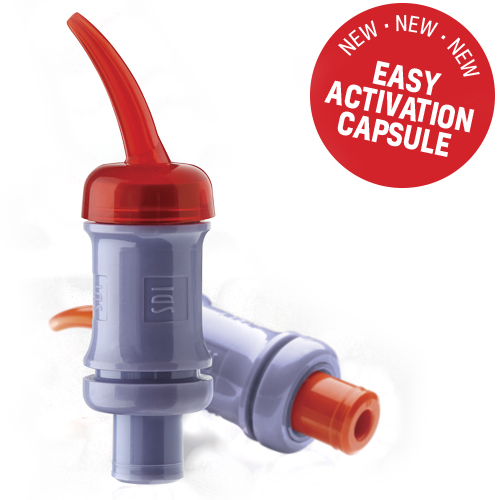
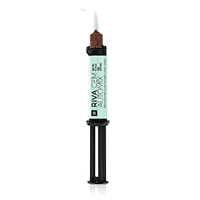
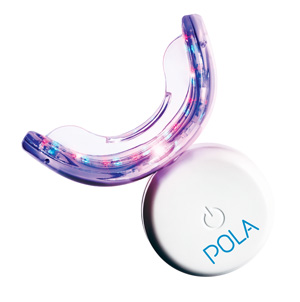
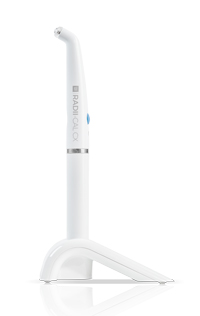
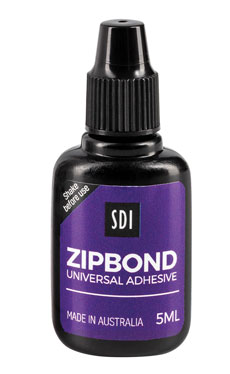


 Australia -
Australia -  New Zealand -
New Zealand - 
 United States -
United States -  Canada -
Canada -  Canada -
Canada -  Central/South America -
Central/South America -  Brazil -
Brazil - 
 Ireland -
Ireland -  Germany -
Germany -  France -
France -  Italy -
Italy -  Spain -
Spain -  Poland -
Poland -  Portugal -
Portugal -  Czech Republic -
Czech Republic -  Other European countries -
Other European countries - 


